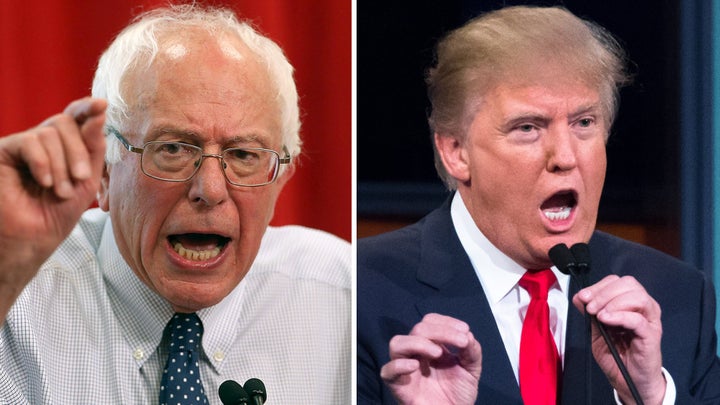
It’s been over two months since the devastating presidential election; time enough for liberals to ask each other, “what lessons did we learn?” Four come to mind.
1. Initially, Democrats had the right message. Americans of all political persuasion believe “the system is rigged.” Democrats started off with this message and then frittered away their advantage.
In her 2012 Democratic Convention speech, Senator Elizabeth Warren said, “People feel like the system is rigged against them. And here’s the painful part: They’re right.” When Warren chose not to run for President in 2016, Bernie Sanders launched his “A future to believe in” campaign. Sanders also argued that the system is rigged: “Enough is enough. This great nation and its government belong to all the people, and not to a handful of billionaires, the super PACs, and their lobbyists.”
Relatively late in his campaign, Donald Trump adopted “the system is rigged” message. In his address at the Republican convention, Trump said: “I have joined the political arena so that the powerful can no longer beat up on people that cannot defend themselves. Nobody knows the system better than me, which is why I alone can fix it. I have seen firsthand how the system is rigged against our citizens.” (Trump used the fact that no charges were brought against Clinton ― over her email scandal ― as evidence the system was rigged in her favor.)
One of the revelations in Arlie Hochschild’s “Strangers in Their Own Land” is that some Louisiana Tea Party voters resonated with Bernie Sanders campaign because they believe the system is rigged. However, they differ from liberals because the Tea Party voters feel that government is the sole problem: the system is rigged because the Obama Administration favors women and people-of-color over hard-working white men.
“The system is rigged” message never worked for Hillary Clinton. For conservative voters, she was seen as part of the “big government” problem. For many Sanders supporters, Clinton was seen as inauthentic.
2. Economic inequality didn’t work as a replacement message. Instead of “the system is rigged,” Clinton opted for “stronger together.”
The economic component of “stronger together” focussed on strengthening the middle class with Clinton’s jobs program and emphasis on the value of economic equality. This value resonates with the Democratic base but not voters in general.
Voters believe that the system is rigged but they don’t agree on why that is; conservatives and liberals have differing internal stories about why U.S. democracy isn’t working. As Arlie Hochschild illustrates, Tea Party voters believe the system is rigged because government has intervened on behalf of “slackers,” Americans who receive preferential treatment but don’t deserve it. As a consequence, Tea Party voters believe that only big business can fix the broken system. (Typically, these voters admire those who belong to the one percent. They voted for Trump because he was perceived as a successful businessman, who “can fix things.”)
Conversely, liberal voters believe the system is rigged because of the influence of big business. They are suspicious of the one percent. (Liberals didn’t vote for Trump for many reasons; one of which was that he was perceived to represent the moneyed elite.)
Liberals and conservatives agree that America needs better paying jobs. And, they agree that the system is rigged; that it’s not working for the average American. But they disagree on the first step to take; conservatives want to start by dismantling government, liberals want to strengthen it.
Conservatives and liberals live in different media silos. Conservative views of the world are heavily influenced by Fox News and Rush Limbaugh. Liberal views are shaped by Rachel Maddow and The New York Times. Nonetheless, Hochschild suggests that a critical difference is that conservatives don’t differentiate between “main-street capitalism” and “wall-street capitalism;” they don’t understand the impact of multinational capitalism and monopoly capitalism. Tea Party voters still believe that all capitalism is good.
3. Democrats didn’t build the necessary grassroots infrastructure. As the presidential battle raged, Democrats comforted themselves with the (false) belief that their vaunted ground game would secure the Presidency.
Hillary Clinton was the Democratic presidential candidate so it’s easy to blame the debacle on her. But the reality is that since Barack Obama won the presidency in 2008, the national Democratic Party has weakened. This has produced a situation where Republicans control Washington as well as a majority of state governments.
Some blame Debbie Wasserman Schultz, who was head of the Democratic National Committee from 2011-2016, but the problem is much deeper. It’s symptomatic of the Democratic malaise that the presidential candidate who drew the most grassroots enthusiasm was Bernie Sanders, who wasn’t really a Democrat.
Sanders believes that the Democratic Party has to be rebuilt from the ground up. He’s right. There’s a strong populist base that needs to be harnessed before the 2018 mid-term elections.
4. Racism was a powerful factor in the election. When Barack Obama was elected President, liberals hoped that we’d moved to a “post-racial” society. Conservatives responded by fanning the flames of racial animosity and, as a consequence, Republicans elected a white supremacist, Donald Trump.
If Democrats are to recover from the debacle of 2016, they need to go back to their central message, “the system is rigged,” rebuild the party from the ground up, and counter racism.
